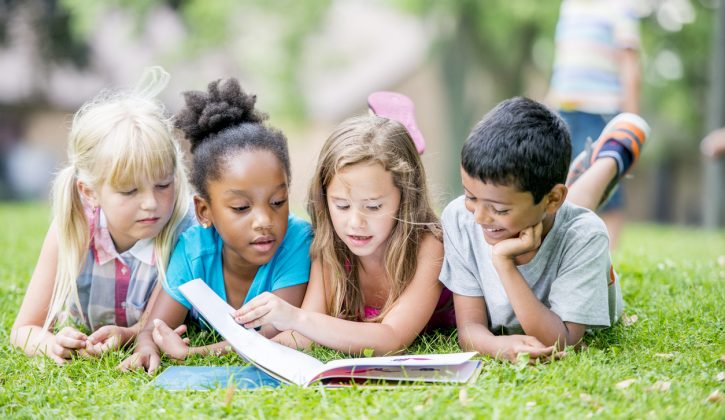Throughout the summer, it’s important to keep the learning momentum going. Especially through this break, whether or not your child made strides or struggled. It’s important to stay on top of the summer learning loss.
Continuing to learn during the summer can help your child retain the school-year progress, improve confidence, and (hopefully) alleviate frustration and stress in September.
If your child isn’t overly motivated in school or struggles to focus, this may sound like an impossible feat. But learning doesn’t have to mean sitting at a desk completing worksheets. Instead, it can be disguised as fun activities that your child may actually (gulp) enjoy!
I have brainstormed some great activities to keep your child motivated all summer long. These activities cover all curriculum areas from kindergarten to grade 3 and can be revised to suit all ages and learning levels.
14 Ways to Stave Off Summer Learning Loss…
1. Lemonade Stand, Bake Sale, or Yard Sale
Have your child organize a lemonade stand, bake sale, or yard sale. They can choose the date (and count down on a calendar), design the advertisement posters (choosing the font, colours, and words to attract customers), and choose the pricing for the products. On the day of the event, have them take the money, count the change back and add up the profits.
2. Art Show
Have your child organize an art show with some friends. They can create their own artwork and put it on display. They can then choose the date, the price for each piece, and where the money should go (a great idea would be to have a percentage go to a charity). They will also make decisions about how the art will be displayed (on a clothesline outside, hanging off trees, lying on a table).
3. Animal Shelter
Volunteer at a nature centre or an animal shelter where your child could learn about different animal groups.
4. Sports Game
Go to a sports game and teach your child how to keep score. If your child is a fan of a team or specific player, have them design their own player card or a big sign (with a slogan) that you can bring to the game.
5. Mini Golf
You could play mini golf and teach your child how to keep score. This is great practice if they are learning about negative numbers. We have some wonderful mini golf courses in Canada.
6. Make Sandcastles
Go to the beach and challenge your child to make a sandcastle with specific dimensions (use area/perimeter) or different shapes, such as pentagons or parallelograms.
7. Build a Cardboard Fort
On a rainy day, have your child create and design a fort out of cardboard boxes at home with similar specifications.
8. Photo Journals
If you go on a trip together, encourage your child to make a photo journal or illustrate their own book about your journey. You can even publish it yourself into a hardcover book.
9. Gardening
Plant a garden of herbs, vegetables and/or plants. Read together about the care instructions for each and record the growth progress through a line or bar graph together.
10. Bilingual Weather
You could discuss the daily weather together in two languages (using pictures with matching words displayed on the fridge) and/or record the daily temperature in both languages. If you’re feeling extra ambitious, graph the temperatures on a line or bar graph together and discuss the hottest/coldest days.
11. Game Night
Make it a weekly ritual to turn off all technology for a couple hours to have a family game night with educational games that promote counting money and critical thinking, such as Candy Land, Charades or Pictionary.
12. Scavenger Hunt
Create an A to Z nature scavenger hunt to help your child become more aware of their surroundings. They can look around for items starting with each letter. For visual learners, it may be helpful to arrange the alphabet letters on the ground and have your child place (or point at) the items beside each letter. Depending on the items, you may want to encourage your child to use a camera to take pictures of the items and leave nature in its place.
You can also try to find some other list items, like: something green, something fuzzy, two kinds of leaves, something you think is beautiful. Or, have older children make their own scavenger hunt for the adults.
13. Read Out Loud
Read a book with, or to, your child (depending on their reading level) every evening for at least 20 minutes. Here are some ways to spice up reading time: take turns reading each line using a variety of voices (act like you have a cold, you’re an opera singer, you’re underwater, etc); use shadow reading (read a line, then have your child repeat it); choose a word that’s used often in the text as the “magic” word, and every time it’s read, your child has to get up and clap, jump, etc. Using these strategies will make reading fun by keeping your child engaged while also practicing their fluency.
14. Recipe Creation
Cook or bake a meal together using a recipe (you may want to start with a smoothie). Have your child read the recipe and write a grocery list. You can incorporate math (by using fractions and doubling the recipe), estimation (by asking your child to estimate the cost of the items at the checkout), or budgeting/counting money.
These are just some of the many ways you can bring learning home and make it fun. If you’re at all concerned about your child’s summer learning loss, or are interested in creating a structured plan, I suggest contacting an education professional who knows the curriculum and can create a learning plan to keep your child on track. They can extend this list and think of other fun ways to keep your child’s mind active this break and ready for the transition into the next school year.
Tagged under: old school activities,outdoors with kids,get outdoors,keep kids active,learning project,brain,plan your summer,seasonal activities,playing outdoors,learning and education,staying active,summer,brain development,kids summer,fun summer activities,how to be active,summer games outdoors kids,summer activites,educational experiences,creative activities,child education,summer outside games
Category: parenting,family-life






